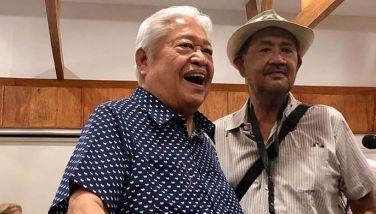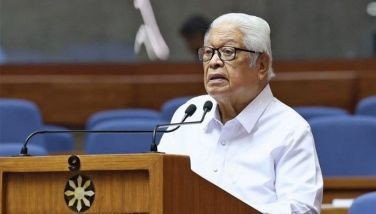50 Philippine crocodiles released in Isabela
BAYOMBONG, Nueva Vizcaya , Philippines – Some 50 young Palawan-bred Philippine crocodiles were released recently into the wild in Isabela as part of intensified efforts to save one of the world’s most critically endangered crocodile species from extinction due to habitat loss, hunting and destructive fishing.
The crocodiles were released at Dicatian Lake in Divilacan, Isabela last week, the first such activity in Northern Luzon aimed at further ensuring the regeneration of the country’s dwindling crocodile population.
A man-made impound-ment in a creek formerly harboring Philippine croco-diles, Dicatian Lake is about 14-ha wide and in most places more than two-meter deep. There are no people living adjacent to the lake.
“(The) reintroduction of captive-bred crocodiles is a major step forward in the conservation of this rare endemic species,” said Merlijn van Weerd, project director of Isabela-based Mabuwaya Foundation.
“Such a large number of endangered species reintroduced to the wild is a rarity in the world,” added Weerd, whose group has been spearheading the revival of the crocodile population here in partnership with the provincial government, the Department of Environment and Natural Resources (DENR) and international environment groups.
Last year, a number of young Philippine crocodiles bred from Isabela’s crocodile breeding center in San Mariano town were released into the wild along the Sierra Madre Mountains.
Said to be the most severely threatened crocodile species in the world, the Philippine crocodiles released on July 31 were bred in captivity at the Palawan Wildlife Rescue and Conservation Center.
Weerd said previous attempts to “reintroduce (crocodiles) has not been successful owing to the lack of suitable release sites.”
Endemic to the country, the Philippine crocodile has a total estimated population in the wild of only 100 mature individuals, “(and they) will disappear (in the near future) if nothing is done,” Weerd said.
Mabuwaya likewise said that the small freshwater crocodile “poses no threat to people unless provoked,” but natural populations have been “wiped out in most parts of the country” by “hunting, destructive fishing and habitat loss.”
The Philippine crocodile is classified by the International Union for Conservation of Nature as critically endangered.
“(It) is even rarer than the Philippine Eagle (but) there is very little attention and conservation action for the Philippine crocodile,” Weerd said.
Studies show that the Philippine crocodile population is now slowly starting to recover, and from only 12 non-hatchling crocodiles (older than one year) in 2000 the number increased to 52 in 2008.
In 1999, a very small population of Philippine crocodiles was found in San Mariano. Subsequently, research and conservation projects were started in the area by the Mabuwaya Foundation, the provincial government, the Isabela State University and the DENR.
Since then, three crocodile sanctuaries have been established, and a joint government-Mabuwaya managed crocodile breeding center, the first in northern Luzon, was put up in San Mariano.
- Latest




























